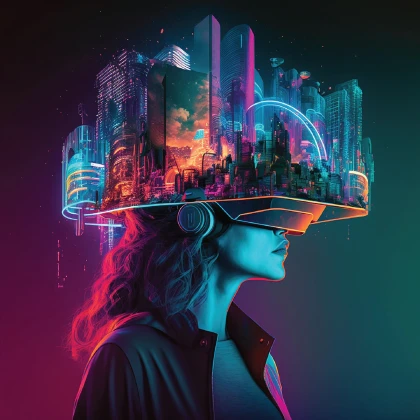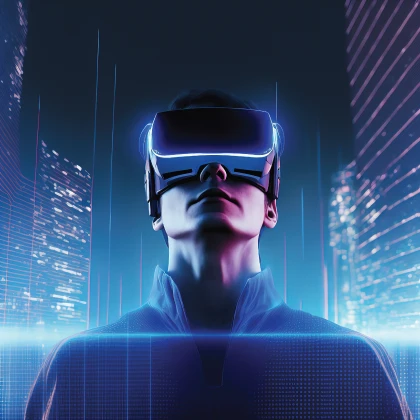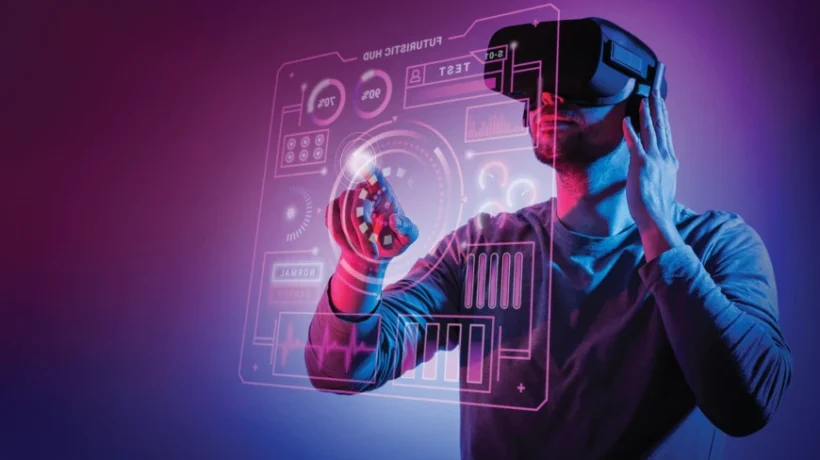A recent survey found that over 50% of people are interested in using virtual reality for gaming, while nearly 30% are interested in its socializing potential.
Ever since Mark Zuckerberg, the CEO of Facebook, talked about the metaverse being the future of the internet, there has been a growing demand for immersive digital experiences, which indicates the Metaverse’s potential significance in our lives.
Therefore, understanding the elements of the Metaverse is crucial as many envision it to be the new digital economy.
What is Metaverse
Meta AI is a cutting-edge technology developed by Meta Platforms, Inc. (formerly Facebook). It utilizes advanced algorithms and machine learning techniques to understand, analyze, and respond to user-generated content across its various platforms.
This innovative AI system is designed to enhance user experiences, improve content moderation, and personalize interactions within the Meta ecosystem.


Elements of Metaverse
Now that we have a basic understanding of the metaverse, let’s have a glimpse inside the elements it encompasses:
Flexible Work Styles:
Flexible Work Styles refers to the ability to work from anywhere, which is often enabled by remote collaboration tools and virtual environments.
For example, people can attend virtual meetings and collaborate with colleagues from different locations without being in a physical office.
An AR Cloud:
An augmented reality (AR) cloud is a digital map of the physical world overlaid with digital information accessible through AR devices.
For instance, AR apps can provide real-time information about surroundings, like directions or reviews, enhancing everyday experiences.
5G:
The fifth-generation cellular network technology that enables faster internet speeds and lower latency is crucial for supporting immersive experiences.
For example, streaming high-quality content, gaming, and using AR/VR applications with minimal lag and interruption.
The Internet of Things (IoT):
IoT refers to interconnected devices that can communicate and share data over the internet.
For example, Smart home devices like thermostats, lights, and security systems can be controlled remotely via smartphone apps.
Augmented Reality:
AR overlays digital information onto the real world using devices like smartphones or AR glasses.
For example, apps that show information about landmarks or translate text in real-time when you point your phone at them.
Head-mounted Displays (HMDs):
Devices like VR headsets that immerse users in virtual environments.
For example, playing immersive VR games, attending virtual events, or exploring virtual spaces.
Spatial Technology:
These are tools that use technology to create digital versions of real-world places for interactive experiences in virtual environments.
For example, virtual home tours, interactive museum exhibits, or remote design collaboration.
Artificial Intelligence:
AI technologies enable intelligent automation, data analysis, and personalized experiences.
For example, virtual assistants like Siri or Alexa, recommendation algorithms in streaming services, and AI-powered customer support.

Final Thought:
The metaverse technologies are changing how we live and work. These advancements are reshaping everyday life, from virtual meetings to interactive experiences with augmented reality.
As these innovations in metaverse elements advance, they have the potential to transform how we interact with the world, blending our physical and digital experiences.





